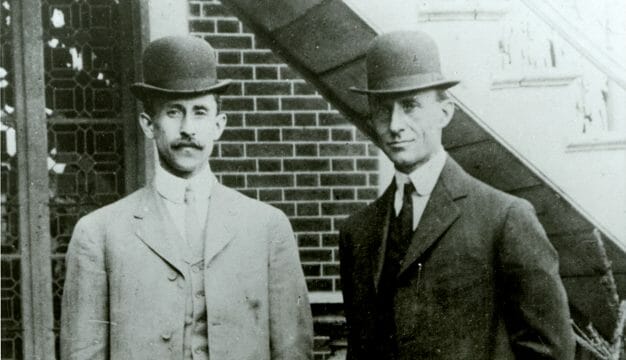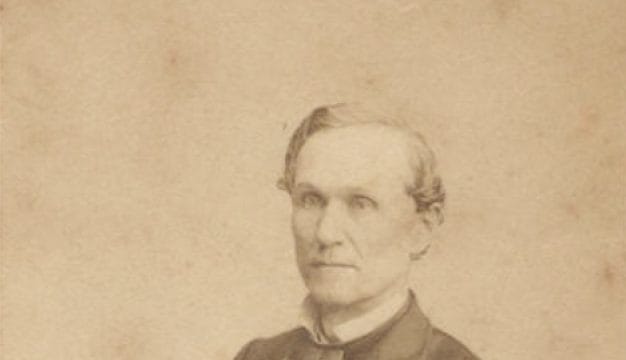Andrew Jackson Beard
Andrew Jackson Beard (1849-1921) was a prominent African American entrepreneur and inventor in the 1880s and 1890s. Largely self educated, he invented, among other things, a specially designed double plow, a type of rotary steam engine, and a device for the automated coupling of railroad cars that has been credited with saving many lives. He also founded several successful businesses in Jefferson County, including a real estate firm and a taxi company.
 Andrew Jackson Beard
Beard was born in 1849 to Milton Beard and Creasey Tatum on a small plantation located near Mt. Pinson in Jefferson County. Little is known about the earliest years of his life, other than the fact that his family was enslaved. Prior to the end of the Civil War, Beard was formally emancipated and released from bondage. Beard remained on the plantation, becoming a sharecropper. He married Edie Beard (at age 16, by some accounts), with whom he would have three sons; he is recorded as having purchased an 80-acre farm near Center Point, Jefferson County, at some point during this period. Beard's life as a farmer and sharecropper came to an end in 1872, however, after a three-week trip to Montgomery, Montgomery County, selling 50 bushels of apples off an ox cart. This long and tedious journey reportedly led him to try his hand at operating a business instead.
Andrew Jackson Beard
Beard was born in 1849 to Milton Beard and Creasey Tatum on a small plantation located near Mt. Pinson in Jefferson County. Little is known about the earliest years of his life, other than the fact that his family was enslaved. Prior to the end of the Civil War, Beard was formally emancipated and released from bondage. Beard remained on the plantation, becoming a sharecropper. He married Edie Beard (at age 16, by some accounts), with whom he would have three sons; he is recorded as having purchased an 80-acre farm near Center Point, Jefferson County, at some point during this period. Beard's life as a farmer and sharecropper came to an end in 1872, however, after a three-week trip to Montgomery, Montgomery County, selling 50 bushels of apples off an ox cart. This long and tedious journey reportedly led him to try his hand at operating a business instead.
 Double Plow Diagram
Relocating to Hardwick, St. Clair County, Beard built a flour mill just outside of Birmingham, Jefferson County. As the business became more and more successful, Beard had increasing time and energy to devote to other projects. In 1881, he received a patent for a new plow design, which he then sold for the sum of $4,000. By late 1887, Beard had designed and patented a second type of plow, for which he again promptly sold the rights, earning an additional $5,200. With these profits now in hand, Beard started a successful real estate business that earned him a further $30,000.
Double Plow Diagram
Relocating to Hardwick, St. Clair County, Beard built a flour mill just outside of Birmingham, Jefferson County. As the business became more and more successful, Beard had increasing time and energy to devote to other projects. In 1881, he received a patent for a new plow design, which he then sold for the sum of $4,000. By late 1887, Beard had designed and patented a second type of plow, for which he again promptly sold the rights, earning an additional $5,200. With these profits now in hand, Beard started a successful real estate business that earned him a further $30,000.
In 1892, Beard filed a patent for a new type of rotary steam engine. This came at a time when the United States was seeking out new power sources to help drive industrialization as well as cheaper alternatives to electricity. Beard claimed that his new rotary steam engine was both safer and more affordable than other versions of the rotary steam engine available on the market, but it only saw limited use and never gained popularity. Beard was not discouraged by this setback and continued inventing.
 Rail Car Coupler Diagram
As word of Beard's mechanical abilities spread, he began receiving competing offers for employment. He worked as a carpenter and a blacksmith before taking a job with the Alabama & Chattanooga Railroad. At the time, the nation's railroad industry was both lucrative for owners and dangerous for many employees. Accidents were all too common, especially among workers who were charged with manually securing railroad cars to each other. The practice, known as coupling, involved slowly backing a railroad car connected to a locomotive toward another railroad car to add it to the train. One railroad worker was assigned the dangerous task of squeezing in between the two cars at the right moment and securing the connection with a large pin. If the procedure was mistimed, the worker could be injured or even killed. Common injuries included the loss of fingers and limbs, particularly arms. Some accounts of Beard's life state that he himself was severely injured and lost a leg. But one brief biography written from family interviews omits this and notes that Beard was often seen walking the streets of Birmingham. Nevertheless, he was disturbed enough by these continual injuries that he soon looked to solve the problem. The result of his efforts was a device known as the "Jenny coupler." The device consisted of two interlocking pieces that were each attached to the coupling parts of opposing ends of railroad cars and automatically locked together when the cars bumped together. Completing and patenting his new invention in September 1897, Beard helped save countless lives and limbs. Modern versions of his coupler are still in use today. Historians are unsure why it was named the "coupling Jenny" or "Jenny coupler," but it should not be confused with the Janney Coupler invented by Eli Janney and patented in 1873.
Rail Car Coupler Diagram
As word of Beard's mechanical abilities spread, he began receiving competing offers for employment. He worked as a carpenter and a blacksmith before taking a job with the Alabama & Chattanooga Railroad. At the time, the nation's railroad industry was both lucrative for owners and dangerous for many employees. Accidents were all too common, especially among workers who were charged with manually securing railroad cars to each other. The practice, known as coupling, involved slowly backing a railroad car connected to a locomotive toward another railroad car to add it to the train. One railroad worker was assigned the dangerous task of squeezing in between the two cars at the right moment and securing the connection with a large pin. If the procedure was mistimed, the worker could be injured or even killed. Common injuries included the loss of fingers and limbs, particularly arms. Some accounts of Beard's life state that he himself was severely injured and lost a leg. But one brief biography written from family interviews omits this and notes that Beard was often seen walking the streets of Birmingham. Nevertheless, he was disturbed enough by these continual injuries that he soon looked to solve the problem. The result of his efforts was a device known as the "Jenny coupler." The device consisted of two interlocking pieces that were each attached to the coupling parts of opposing ends of railroad cars and automatically locked together when the cars bumped together. Completing and patenting his new invention in September 1897, Beard helped save countless lives and limbs. Modern versions of his coupler are still in use today. Historians are unsure why it was named the "coupling Jenny" or "Jenny coupler," but it should not be confused with the Janney Coupler invented by Eli Janney and patented in 1873.
Beard sold the rights to his revolutionary invention back to the railroad industry for $50,000, a substantial amount at the time. He obtained other patents for the coupler and by one account may have made more than $1 million, with which he purchased real estate and started a taxi line in Jefferson County. Little else is known about Beard's life other than this. Reportedly having become paralyzed and impoverished in his last years, Beard died in the Jefferson County Alms House on May 10, 1921, and was buried in an unmarked grave in Woodlawn Cemetery. In 2006, Beard was posthumously inducted into the National Inventors Hall of Fame in Akron, Ohio, finally bringing some distinction to the little-known inventor from Jefferson County.
Further Reading
- Hafnor, John. Strange but True, America: Weird Tales from All 50 States. Lone Pine Productions, Vancouver B.C.: 2009.



